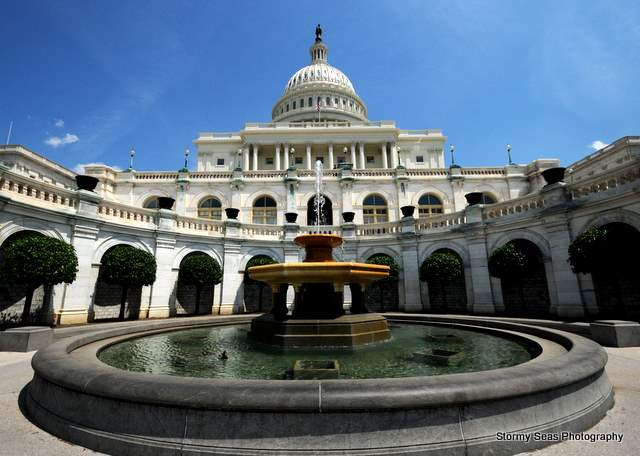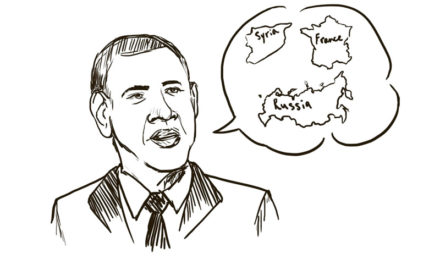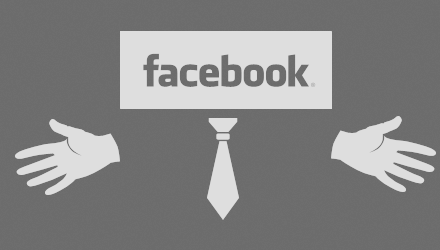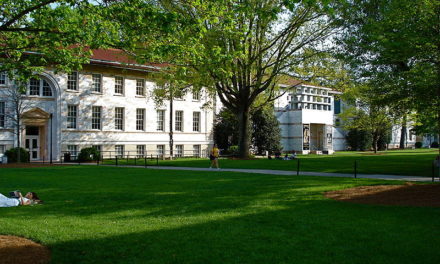
The Hill recently reported that over the last few weeks, an increasing number of Senate Democrats who are facing tough reelection campaigns this fall have called upon the Internal Revenue Service to increase their policing of political groups with tax-exempt 501(c)(4) status.
As this controversy intensifies, it means that we once again will be faced with the eternal debate of how much money should influence our political institutions.
One organization that has fallen under particularly harsh scrutiny as a result of this effort to criticize 501(c)(4) groups is Americans for Prosperity, an organization funded in part by none other than Koch Industries. Yes, THAT Koch Industries, owned by none other than the infamous Koch brothers, who are often attacked by left-leaning pundits and activists as the biggest funders of right-wing political operations. No doubt, these ne’er-do-wells are the root cause of all things corrupt in American politics.
At least, that’s what their critics tell us. But are they really the gigantic source of darkness that we have been told they are?
The Center for Responsive Politics (CRP), a nonpartisan organization that according to its website seeks to “inform, empower, and advocate” on issues of governmental transparency and money in politics, released a chart listing the all-time top 156 major political donors from 1984 to today. Their list, which is ranked in total dollars spent and is further broken down by percentages donated to either GOP- or Democrat-affiliated candidates or Political Action Committees (PACs), is based on official data released in December by the Federal Elections Commission.
For those who subscribe to the evil-right-wing-corporate-funding theory of politics, the findings are certainly surprising.
According to the data, there are equal numbers of large-scale donors that give to either political party. Of the top 156, CRP identified approximately 50 that gave primarily to the GOP and 48 that gave primarily to Democrats, while the rest were “on the fence” and gave to both major parties in roughly comparable amounts. In addition, many groups did not give fully to either major party, instead contributing a portion of their political contributions to third-party candidates or independents.
While the numbers of companies that donate to either party may be on par, the biggest donors aren’t who you think they are: out of the top 25 all-time largest political donors, 15 companies donated almost exclusively to Democrats. By contrast, only three–yes, you read that correctly–donated predominately to the GOP. Even expanding the list to the top 50 doesn’t change the imbalance all that much: 20 companies still donated predominately to Democrats, and only nine donated to Republicans.
The raw dollar figures are also eye-opening: out of the total political donations made by these top donors, totaling almost three billion dollars, Democrats raked in roughly $1.66 billion of that amount. Republicans, by contrast, only raked in $1.16 billion, almost $500 million behind their left-leaning competitors. (Independents and third-party candidates, in case you are interested, only received a paltry $158 million.)
The single largest donors to either party are also eye-opening. The top donor out of all donors was not some evil right-wing corporation as many might expect, but was rather a liberal one: ActBlue, an organization dedicated to funding liberal causes, donated over 99 percent of their total $97.1 million in political donations to Democrats. The single largest corporate donor to Republicans, by contrast, was communications provider AT&T, which donated only $32.2 million to the cause. What is more fascinating, however, is that AT&T isn’t even listed by CRP as a right-leaning donor: it falls within CRP’s “on the fence” category, as it also donated $23.1 million to Democrats during the same time period.
And those nefarious Koch Brothers? They didn’t even make the top 50. In fact, Koch Industries only made it to number 59 on the list, donating just under $16.3 million to Republicans. Interestingly enough, Koch Industries also donated just under $1.5 million to Democrats during that same time period–making Koch Industries far more generous to “opposition” candidates than ActBlue, which donated zero dollars to Republicans.
So what, then, do these numbers from CRP tell us about political funding in America? Despite what the media or political leaders may want us to think about political spending, the left in this country is in no way at a disadvantage. Based purely on the numbers, Democrats actually raked in almost half a billion dollars more in campaign contributions from large donors than did Republicans.
Stereotypically “right-wing” corporations actually aren’t as monolithic as we have been led to believe. Companies that donated primarily to conservatives have actually been more generous in donating to Democrat candidates than “left-wing” groups are in donating to Republicans.
Over 21 left-leaning large donors donated less than 10 percent of their total political contributions to opposition candidates, whereas only four right-leaning groups did the same for their opposition.
We don’t know who the political “little guy” actually is anymore. Many of the groups that were the largest donors were groups like unions and activist organizations, including the International Brotherhood of Electrical Workers, the American Federation of Teachers and EMILY’s List, all of whom the media tends to portray as sticking up for the average Joe or Jane.
Based on the numbers, however, these groups are actually quite large and influential. By contrast, “evil corporations” like Koch Industries, Exxon and British Petroleum (BP) actually fall quite low on the list of big donors and may not be as influential as we have been led to believe.
Now, it is important to note that this list does only focus on donations made to candidates and PACs. It does not include independent expenditures that companies made following the Citizens United decision (though CRP does offer a separate list with those expenditures on their website). Nor, to my knowledge, does the list include donations to the maligned 501(c)(4) organizations mentioned previously. Spending data published by the Sunlight Foundation, another nonpartisan organization that focuses on political spending, suggest that 501(c)(4) spending was in fact high during the 2012 election, and that many of the biggest spenders were right-of-center groups.
Given the CRP data above, however, that shows such a strong leaning toward the Democrat side of the donation spectrum, the concerns expressed by Democrats in the Hill article cited above now seem patently political. If the IRS began cracking down in this way, it would have a similar effect on 501(c)(4)s as did the IRS’s previous efforts to overly-scrutinize conservative groups applying for tax-exempt 501(c)(3) and 501(c)(4) status. Those prior efforts, which had hamstrung conservative grassroots efforts and have since prompted waves of congressional investigations, began before the 2010 elections and continued until former IRS Commissioner Doug Shulman resigned five days after the 2012 election.
Taking conservative 501(c)(4) groups out of the picture come election time while simultaneously leaving large Democrat donors intact would put at-risk Democrats well ahead of their competitors financially, right at a time when advertising dollars matter most.
If anything, these numbers should prove to us just how delicate and complicated the world of political campaign financing actually is. We all need to pay better attention to where the money comes from, because everything we think we know about money in politics is at best incomplete and at worst completely wrong.
– By David Giffin
The Emory Wheel was founded in 1919 and is currently the only independent, student-run newspaper of Emory University. The Wheel publishes weekly on Wednesdays during the academic year, except during University holidays and scheduled publication intermissions.
The Wheel is financially and editorially independent from the University. All of its content is generated by the Wheel’s more than 100 student staff members and contributing writers, and its printing costs are covered by profits from self-generated advertising sales.






